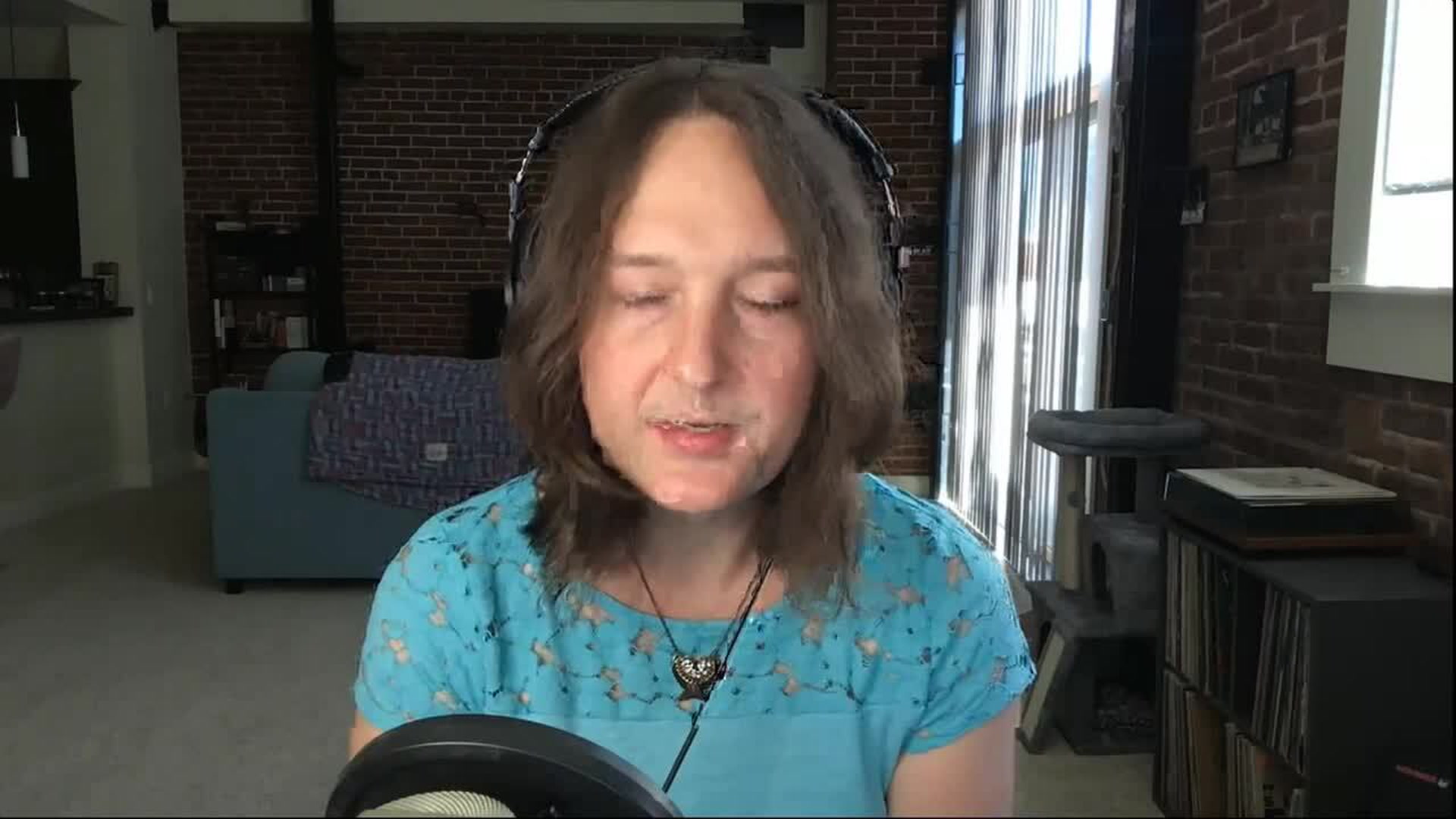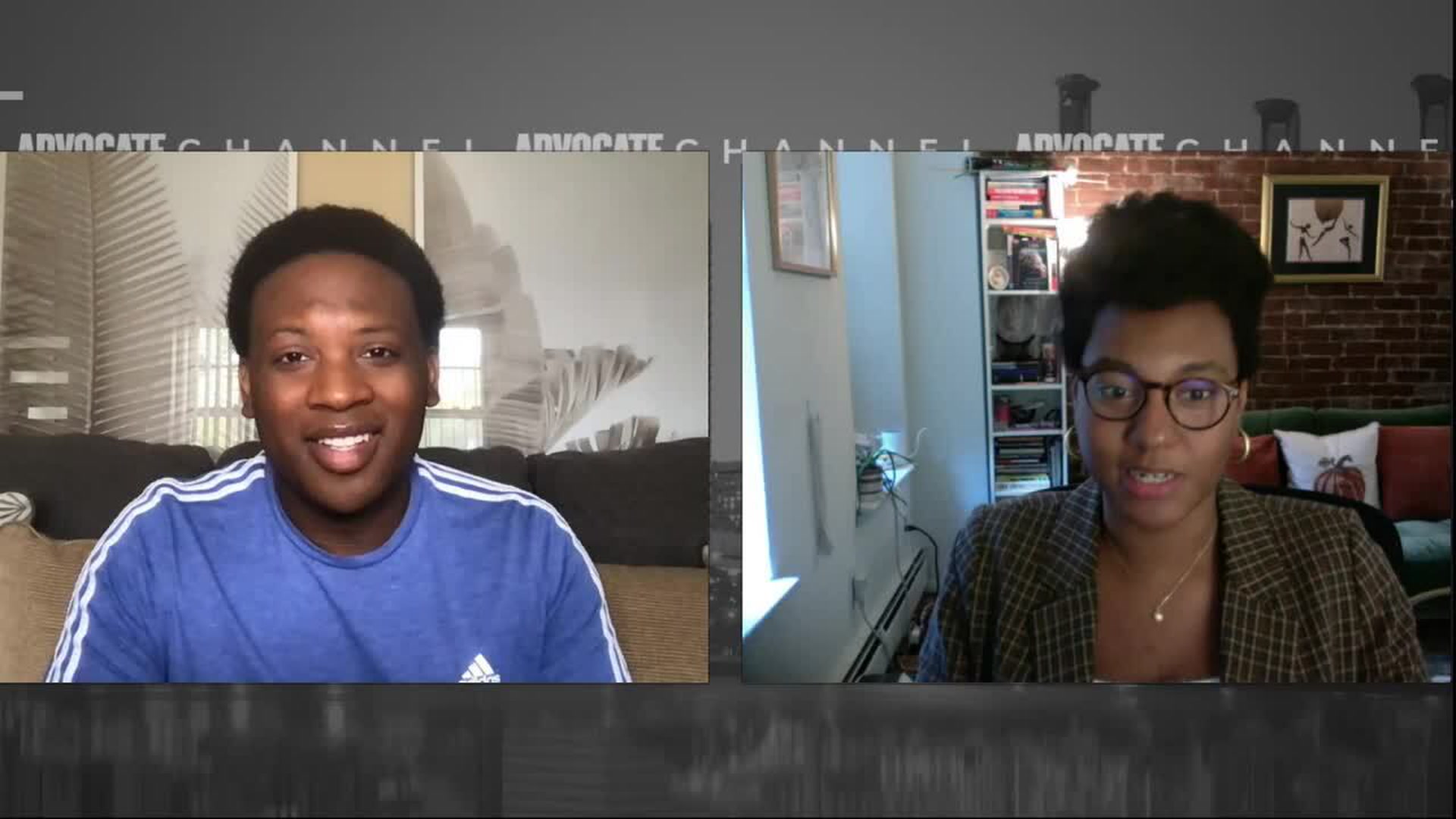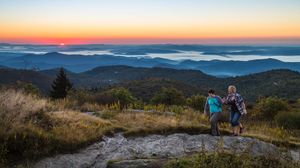Viewers can watch ‘Queer Cuts: New Hope’ live from November 6-7 at 6pm ET/3pm PT
Livestream using the ‘Watch Live’ player on theAdvocateChannel.comhomepage.
Or watch through the ‘Live Streams’ section on the Advocate Channel App available onGoogle Play, Apple Store, Roku, & FireTV

There’s a lot that happens during the process of creating a documentary. When stories are uncovered, the journey of filmmaking can change instantly. From shifting focus to a new subject to changing perceptions on a previously understood topic, there’s so many things that occur. For the five filmmakers (Hansen Bursic, Joy Davenport, Natalie Jasmine Harris, Kase Peña, and Kristal Sotomayor) selected as the inaugural class of the Creative Hope Initiative, when creating their short docs, they also had moments on set that would alter their experience irrevocably.
The Creative Hope Initiative, created by production studio TRAVERSE32, funded these five filmmakers to create short documentaries highlighting local queer stories in New Hope, Pennsylvania. With filming now completed, these filmmakers are sharing their insights and discoveries from the filmmaking process.
View clips from each interview below, and watch all five complete exclusive interviews within the "Queer Cuts" section on the Advocate Channel App. You can download the app from Google Play, Apple Store, Roku, and FireTV.
"Prada P***y," Directed by Kase Peña
For trans filmmaker Kase Peña, she wasn’t sure how New Hope would inspire her. Her documentary, Prada P***y, follows Kase as she travels to New Hope to research the possibility of having vulva vaginoplasty. When asked about the filmmaking journey, Kase shares how her newfound knowledge of New Hope, and one vital resident, helped guide her process.
“I had never heard of New Hope before making this film, so it was completely new to me,” Kase explains. “I found out about Dr. Christine McGinn, another trans woman, who performs vaginoplasty. She’s one of the top surgeons in the world for that, and I was immediately drawn to her.”
Kase continues on how learning about Dr. McGinn helped shape the subject of her documentary, explaining that, “I immediately felt it in my heart that the story should be about her, or should include her in my own journey. As a filmmaker, I was hesitant about including my story with hers [Dr. McGinn’s], but I realized that I have a powerful story to tell also.”
“New Hope Rondo," Directed by Joy Davenport
Another filmmaker with a powerful story to tell is Joy Davenport, whose documentary New Hope Rondo looks at the past of New Hope and how it informs the town’s future, weaving together interviews with centuries of archival material to explore how gentrification has shaped the Pennsylvanian town for better and for worse.
When asked how the process of filming changed her perception of gentrification, Joy explained how her initial experiences with the subject informed what she uncovered.
“This experience expanded and complicated my views on gentrification,” Joy begins. “I’ve lived in big cities quite a bit, and gentrification is omnipresent. And I think what this film did was expand how I see gentrification.”
Joy focuses on New Hope specifically and the gentrification the town has witnessed, explaining that, “There is some clear gentrification in New Hope, without scratching the surface. There’s corporate buyout of land, but going back 40 years, farmland was developed into condominiums and even further back in history, industrial facilities gave way to tourist attractions. I explored this history and encountered different flavors of gentrification that expanded my own conception.”
While going through this initiative, a filmmaker who expanded upon their own ideas of learning from being a part of a team was Natalie Jasmine Harris. Her documentary, Ben In Bloom, follows a non-binary and queer teenager from the contentious Bucks County, Pennsylvania as they prepare to leave their hometown behind for college in California.
When asked how it felt to be a part of the Creative Hope Initiative, Natalie admitted that all the other filmmakers have grown close since working on their documentaries, helping each other learn and develop their craft together.
“It’s amazing to be a part of this initiative,” Natalie said. “All of us filmmakers have a little group chat where we’ve been able to learn from each other’s process, while commiserating on the hurdles we’ve all faced while filming.”
Natalie jokes, but in all seriousness, she continues on by saying that, “We also celebrate the wins and share our progress of telling these important stories together, so it was really beneficial to be a part of a group instead of working alone, which can happen so often in the filmmaking world.”
“Trans Heaven, Pennsylvania," Directed by Hansen Bursic
While a lot of these filmmakers learned during the documentary process, for Hansen Bursic, it took completing production for him to look back on how momentous his work had become. His short documentary, Trans Heaven, Pennsylvania, explores the untold story of legendary weekend-long parties at New Hope bar The Raven that saw hundreds of transgender women and crossdressers take over the town, traveling from all over the country to meet other people like them at the gay safe haven.
When asked about the importance of preserving the trans history of The Raven, Hansen reflects on what transgender people have faced throughout history and what they’re facing today.
“It’s amazing,” Hansen starts. “When considering all the tough and terrible headlines out there right now about trans folks, having their rights systematically attacked across the country, it’s really important to have this documentary of trans joy and this preservation of trans history. Being a historian, I can tell you that trans people were here and have always been here.”
Hansen continues on when discussing the significance of The Raven in trans history, saying that, “This documentary is about joy. It’s about this party of trans women that came together for the first time in their lives to meet other people like them and learn from other trans women. So, I’m honored to be able to tell that history.”
“Don’t Cry For Me All You Drag Queens," Directed by Kristal Sotomayor
But that doesn’t mean time on set was all serious internal reflections. For Kristal Sotomayor, there was a lot of fun to be had that helped inform the tone of their film. Don’t Cry For Me All You Drag Queens pays homage to the legendary Mother Cavallucci by weaving together the past and present to provide a striking portrait of belonging and memory. Poetically merging archival photographs and present-day footage from a community drag show, the film sparks conversation about the modern-day issues Mother Cavallucci revolutionized.
When asked about fun moments from shooting, Kristal shares that they were able to put together a drag show in Mother Cavallucci’s honor. And although the director didn’t dress up in drag, that doesn’t mean they didn’t come prepared.
“I didn’t get dressed up in drag, but honey, I came dressed,” Kristal jokes. “I wore a pink prom dress with all the accessories in honor of the occasion.”
The filming experience was a lot of fun for Kristal, as they explain that, “It was really silly talking to my crew to get a shot while wearing this prom dress, but it was a lot of fun.”
There’s a lot these budding directors uncovered while filming, and there’s a lot for audiences to uncover about this small town with rich queer stories when attending “Queer Cuts: New Hope” on November 4th, where all five documentaries will be screened at the Bucks County Playhouse. If you can’t make it in-person, all five documentaries will be streaming on the Advocate Channel App from November 6-7. It’s time for these LGBTQIA+ stories to be told and to champion the new storytellers making sure queer stories are never forgotten.





































































































































